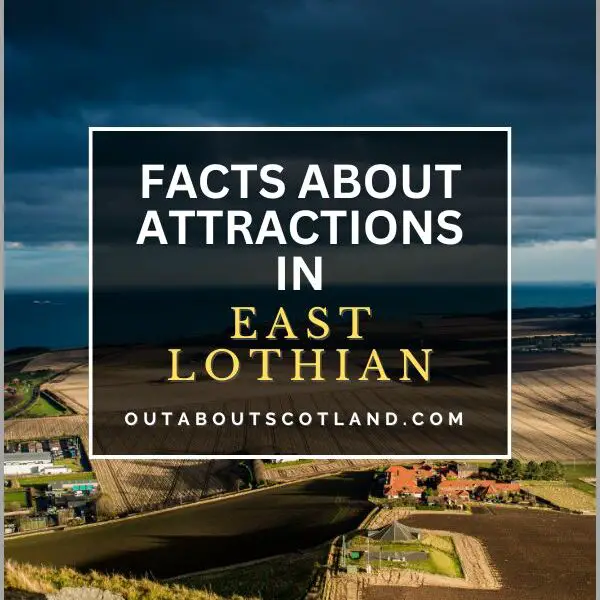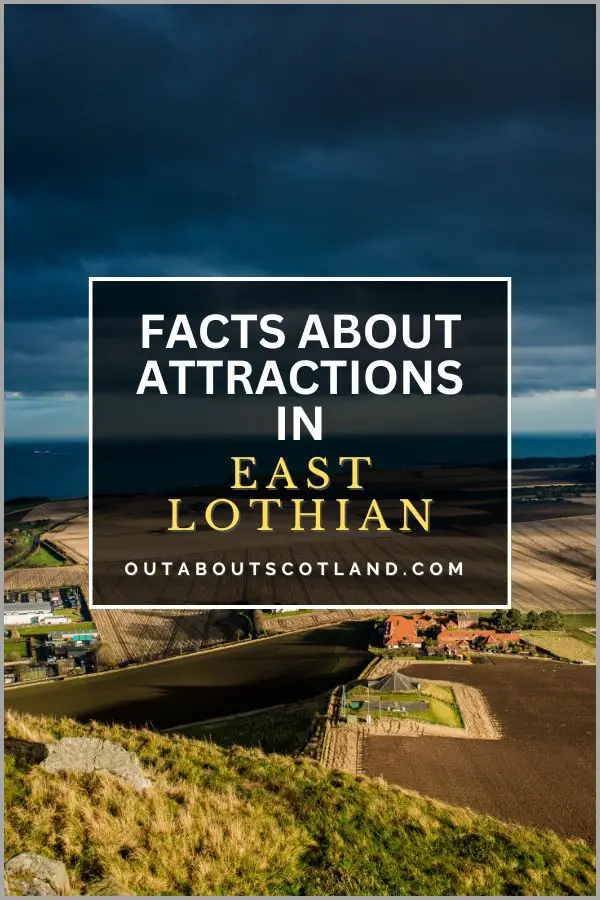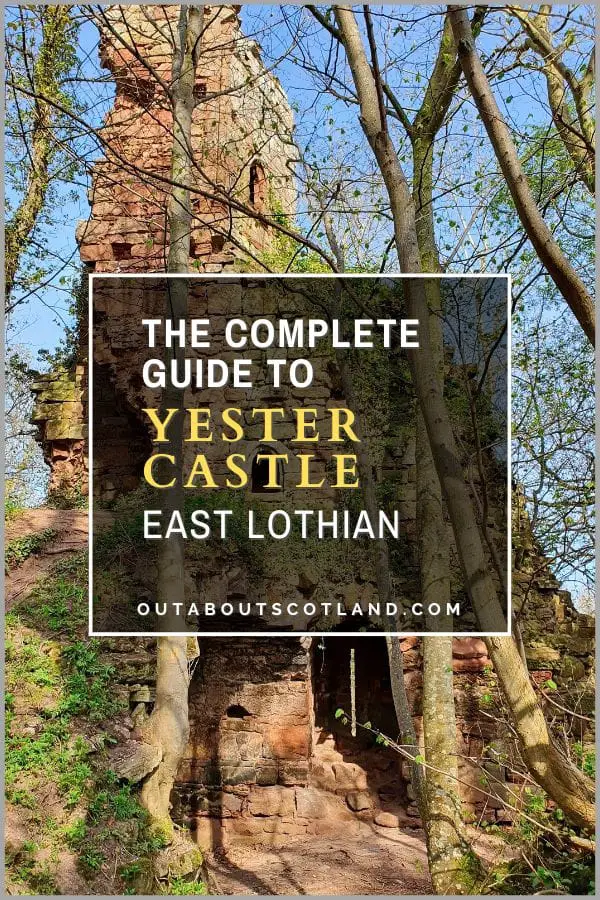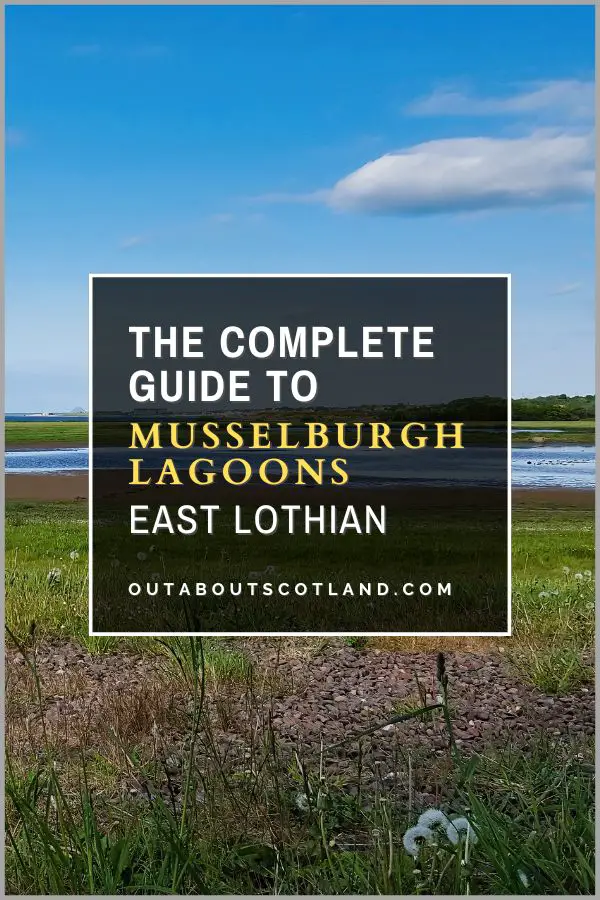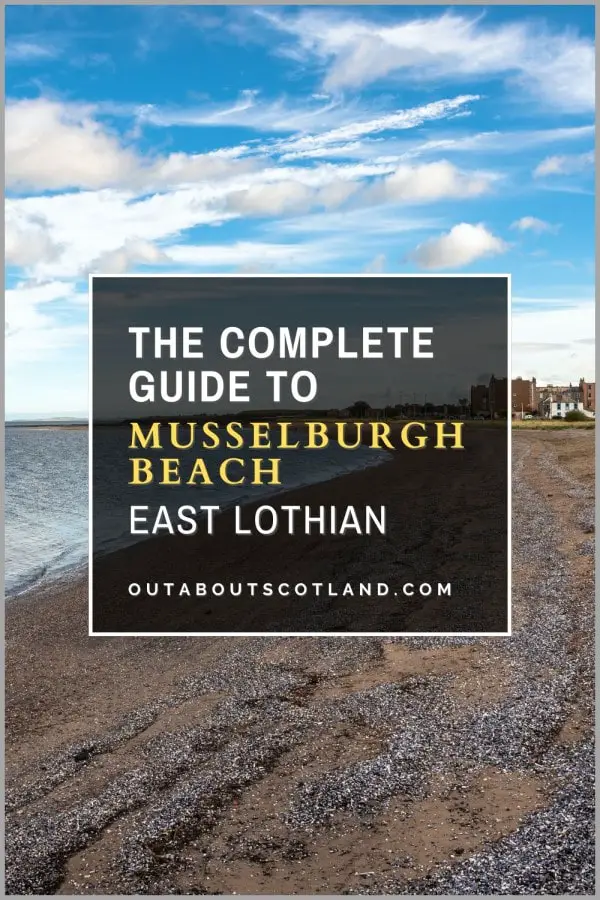East Lothian, often referred to as the ‘Golf Coast’, is a county in the south-east of Scotland, bordering the City of Edinburgh, the county of Midlothian, and the Scottish Borders.
The county is renowned for its high-quality golf courses including the world-famous Muirfield, home to The Open Championship, but East Lothian isn’t just about golf. It’s also home to several beautiful beaches at North Berwick and Gullane and it boasts major attractions including Tantallon Castle and the National Museum of Flight.
The area is also a haven for wildlife, with the Scottish Seabird Centre in North Berwick and the John Muir Country Park providing excellent opportunities for birdwatching and nature walks.
In this article, we’ll take a look at some facts about attractions in East Lothian from towns and castles to hills and beaches. It’s impossible to include every attraction from the county so the following list includes a few of the big-name attractions as well as a selection that are off the standard tourist trails.
Bass Rock

Bass Rock is a Bird Sanctuary: One of the most interesting facts about Bass Rock is that it’s home to the world’s largest colony of Northern gannets, making it a globally significant bird sanctuary. During the peak breeding season it’s estimated that over 150,000 gannets live on the rock.
Volcanic Origin: Bass Rock is the remains of a 320 million-year-old volcano. The rock is primarily made of phonolitic trachyte, a rare type of igneous rock.
Historical Significance: From the 15th to the 19th century, Bass Rock served as a prison. Its first prisoners were religious dissenters known as Covenanters in the 1670s. The severe isolation and inhospitable conditions made it an ideal place for a prison.
Bass Rock Lighthouse: Constructed in 1902, the Bass Rock Lighthouse is 66 feet high and originally cost £8,087 to build. It was automated in 1988 and still aids in the navigation of the Firth of Forth, shining a light that can be seen up to 28 nautical miles away.
Impressive Size: Despite being called a ‘rock’, Bass Rock is a sizable island, covering an area of 3.2 hectares (about 8 acres). Its highest point towers over 107 metres (351 feet) above sea level, making it a striking sight from the mainland.
Dirleton Castle
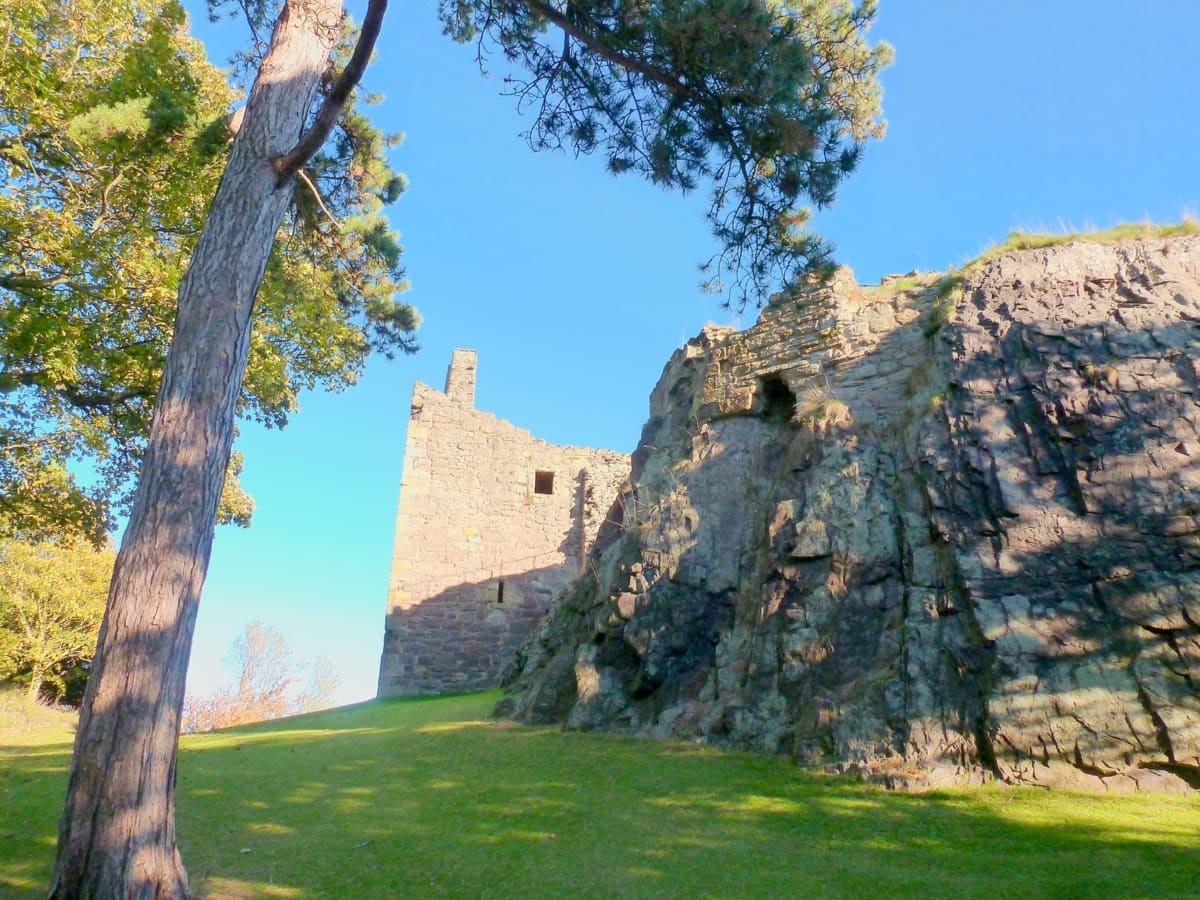
Historical Significance: Dirleton Castle, located in the village of Dirleton, dates back to the 13th century. It was built around 1240 by John De Vaux, a Norman knight, making it one of the oldest surviving castles in Scotland.
Architectural Evolution: The castle displays a striking blend of architectural styles, reflecting the changing tastes and needs of its inhabitants over the centuries. The original fortress was built in the Norman style while later additions feature Scottish Baronial and Gothic influences.
Sieges and Battles: Dirleton Castle has a turbulent history, having been besieged and damaged multiple times during the Wars of Scottish Independence in the 14th century. The forces of Edward I of England captured it in 1298, but the Scots later took it back.
Gardens of Note: The castle grounds are home to the world’s longest herbaceous border which has been recognized by the Guinness Book of World Records.
Ghostly Tales: Like many ancient castles, Dirleton Castle has its fair share of ghost stories. It’s said to be haunted by a ‘Grey Lady’ who is believed to be the spirit of a woman who was imprisoned and died in the castle.
Abandoned in Time: The castle was abandoned in the late 17th century after it was damaged during a siege by Oliver Cromwell in 1650. Its owners, the Nisbet family, built a new residence nearby, leaving Dirleton Castle to fall into ruin.
Dunbar Harbour
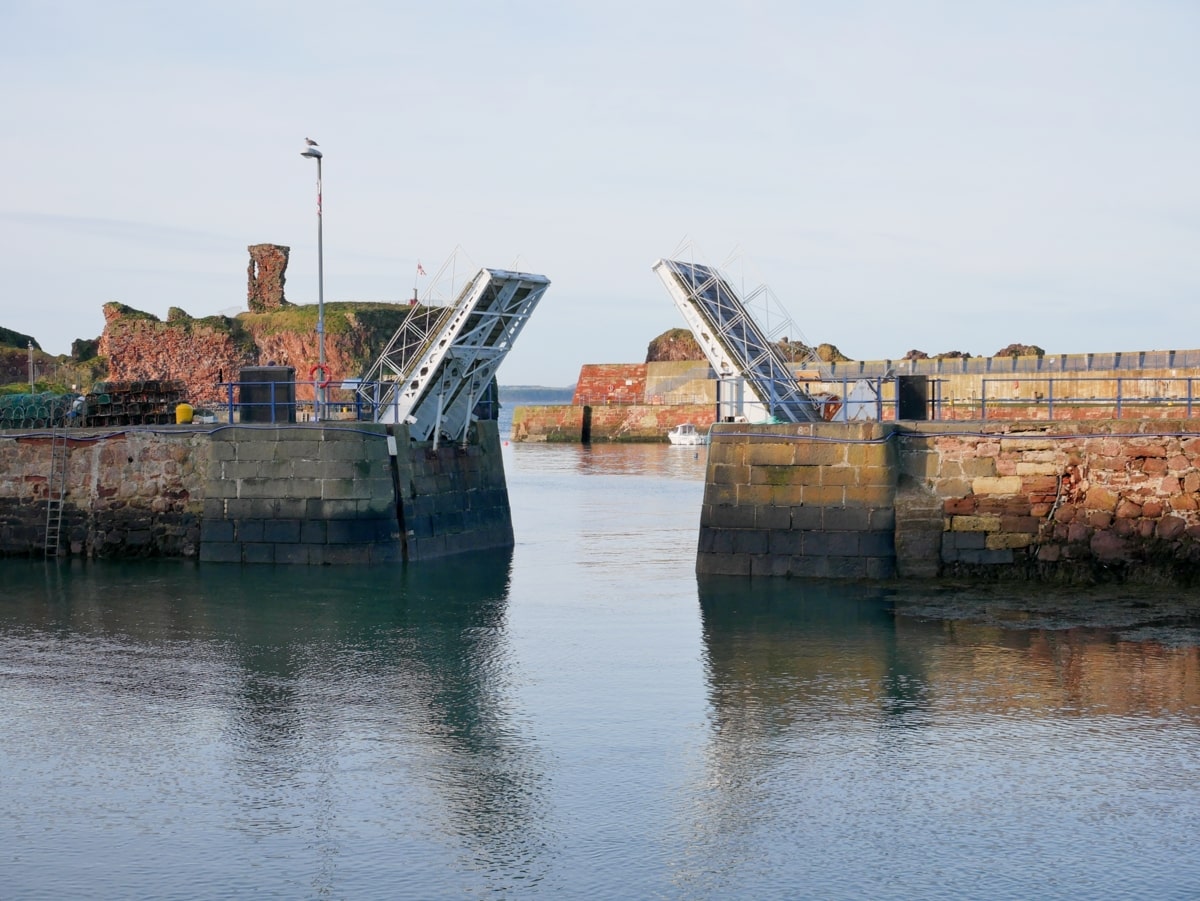
Historical Significance: Dunbar Harbour is one of the oldest harbours in Scotland and has a history dating back to Roman times.
Three Harbours: The harbour comprises the Old Harbour and Broad Haven which date from about 1574, and the New Harbour, or Victoria Harbour, which dates from 1842.
Fishing Industry: Dunbar Harbour was once a prosperous fishing port. It was famous for its herring fishery, and in the 19th century, it was one of the main herring ports on Scotland’s east coast.
Shipbuilding History: The harbour also has a substantial shipbuilding history. Many wooden fishing vessels were constructed there during the 19th and early 20th centuries.
Harbour Trust: The Dunbar Harbour Trust manages the harbour and has been involved in various conservation and improvement projects to maintain its appeal and functionality, including the creation of the popular annual Dunbar Harbour Festival.
Victoria Harbour: Victoria Harbour is one of the oldest harbours in Scotland that’s still in operation. It was originally built in the 16th century and was extended in the 17th century. Today, it’s mainly used for leisure activities like sailing and fishing.
Battery Defence: Dunbar Harbour is home to the Dunbar Battery, an impressive fortification built in the 18th century as a defence against potential French invasions.
Gosford House
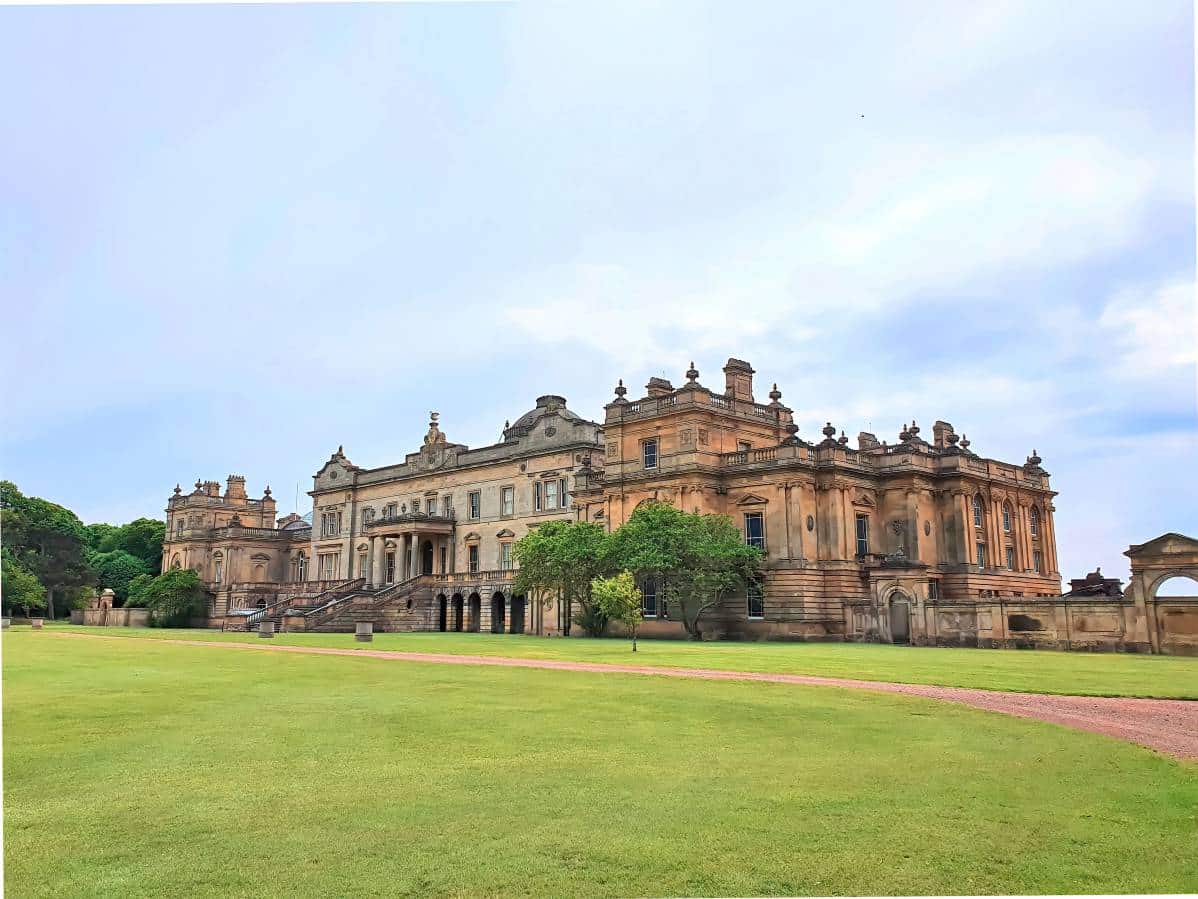
Architectural Marvel: Designed by the renowned architect Robert Adam in the late 18th century, Gosford House is one of the last great architectural works by Adam, showcasing his signature blend of ancient Greek and Roman designs.
World War II History: During World War II, Gosford House served as a military hospital, treating wounded soldiers from the battlefields.
Impressive Art Collection: The house is home to an extensive art collection which features works by prominent artists such as Raeburn and Van Dyck.
The Marble Room: Gosford House boasts a magnificent marble room, featuring marble of different hues from across Italy. It’s considered one of the finest marble rooms in Europe.
Unique Mausoleum Design: The mausoleum at Gosford House, designed by James Playfair, is modelled on the Temple of Theseus in Athens.
Curling History: Gosford House has a historical association with the sport of curling. The 8th Earl of Wemyss, a former resident of the house, was a significant figure in the sport and helped establish the rules of modern curling.
Film Location: The grandeur of Gosford House has attracted filmmakers from around the world. It has been used as a location in several films and TV series, including ‘The House of Mirth’ and ‘Outlander’.
Hailes Castle
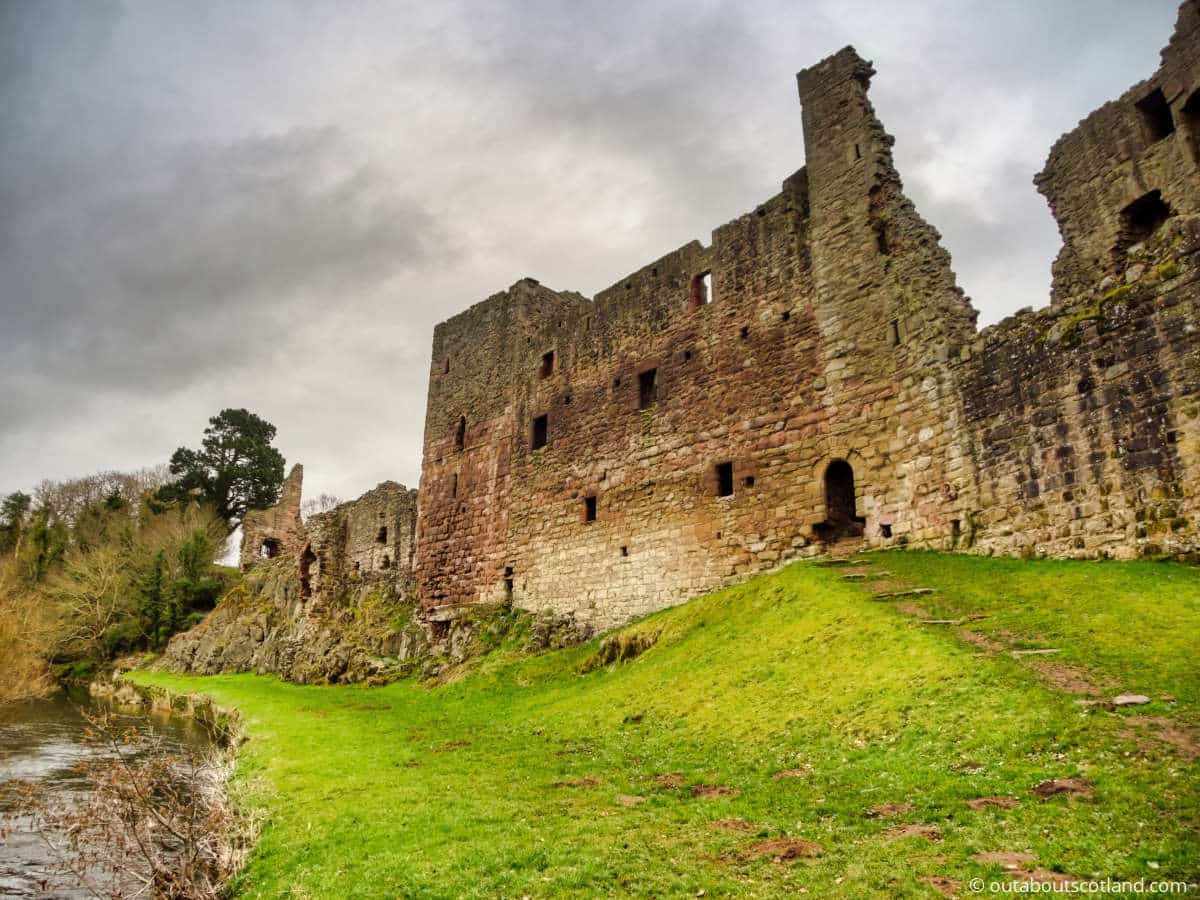
Early Origins: Hailes Castle was built in the early 13th century, making it one of the oldest stone castles in the country. Its oldest section dates back to around 1220.
Influential Families Owners: Over the years, a number of strong and influential families have owned Hailes Castle. It was initially built by the Gourlay family, later confiscated by King Edward I of England, and subsequently passed into the hands of the St. Clairs and the Hepburns.
Historical Significance: Hailes Castle played a crucial role during the Wars of Scottish Independence in the 14th century. The Scots later took it back from English forces.
Architectural Styles: The castle features a diverse range of architectural styles due to being built and altered over several centuries. This includes a 13th-century curtain wall, a 14th-century keep, and 15th-century residential buildings.
Mary Queen of Scots: The castle is connected to some key historical figures including Mary Queen of Scots who stayed there in 1567.
Siege and Destruction: Hailes Castle has seen its fair share of conflict. In 1650, during the Third English Civil War, Oliver Cromwell’s forces besieged and heavily damaged the castle.
Lammermuir Hills
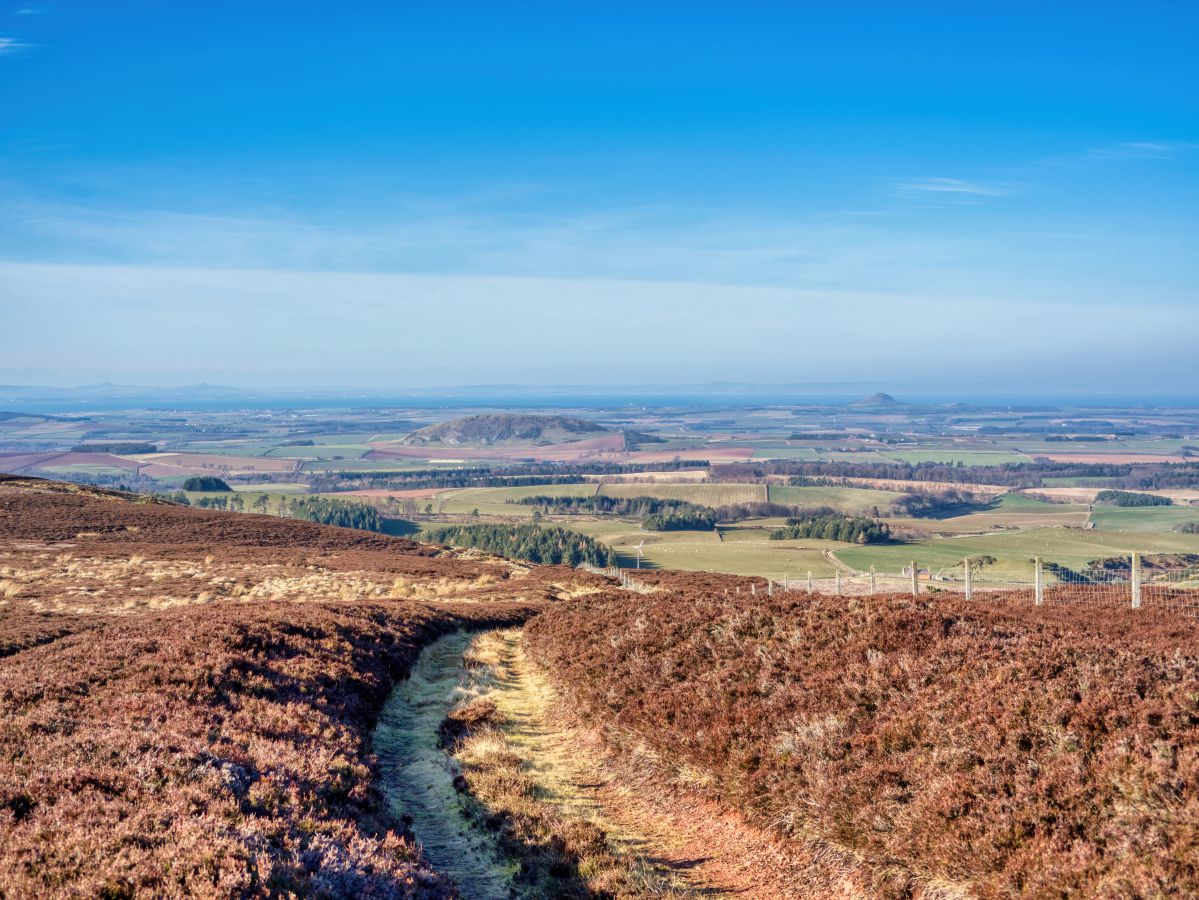
Geographical Wonder: The Lammermuir Hills span the Scottish Borders and East Lothian, creating a natural boundary between the two counties.
Viking Name: The name ‘Lammermuir’ means ‘lambs’ moor’ in Old Norse.
Historical Significance: The hills have evidence of ancient settlements dating back to the Iron Age. They were also the site of several battles during the Middle Ages.
Wildlife Haven: The Lammermuir Hills are home to a diverse range of wildlife. Species such as red grouse, short-eared owl, and mountain hare can be found there. The region is also a habitat for rare moorland birds like the curlew and golden plover.
Sheep Farming: Historically, the hills have been used for sheep farming, a tradition that continues today. The region is known for producing high-quality wool, particularly from Cheviot and Blackface sheep.
Walking Trails: The hills are laced with numerous walking trails, making them a popular destination for hikers. The Southern Upland Way, a coast-to-coast long-distance trail, passes through the Lammermuir Hills.
Inspiration for Literature: The Lammermuir Hills have inspired several literary works. Sir Walter Scott’s novel, ‘The Bride of Lammermoor’, is set in the region.
Musselburgh Beach
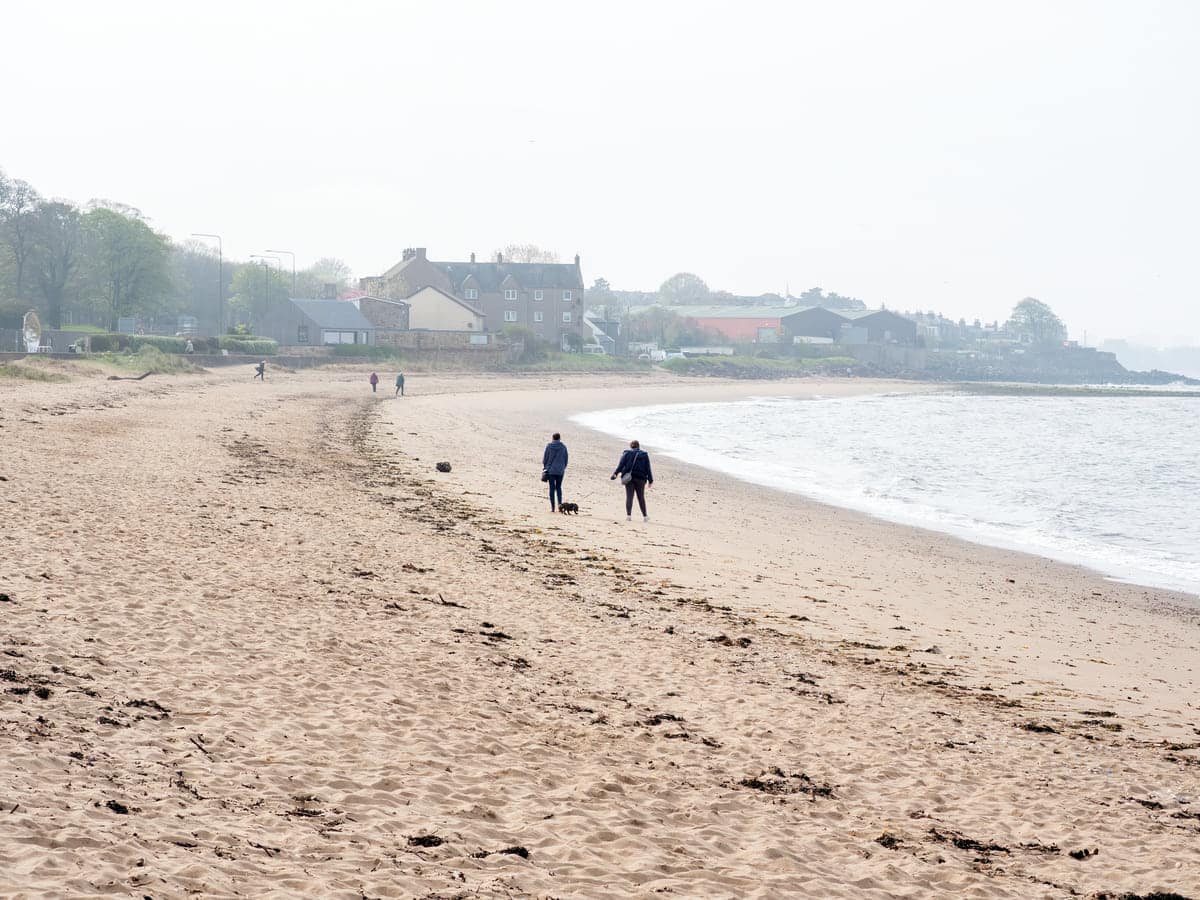
Historical Significance: Musselburgh Beach is situated in the historic town of Musselburgh which is known as ‘The Honest Toun’ and boasts over a thousand years of recorded history, making it one of the oldest towns in Scotland.
River Esk: The beach is located near the mouth of the River Esk which is renowned for its regular sightings of seals and sea birds.
Nearby Attractions: Musselburgh Beach is located near several popular attractions, such as Musselburgh Racecourse, the Brunton Theatre, and the John Muir Way, a long-distance cross-country walking route.
Golfing Heritage: Musselburgh is famous for its golfing history, and the beach is not far from Musselburgh Links, one of the oldest golf courses in the world.
Rare Combination: Until the early 20th century, the golf course was shared with Musselburgh Racecourse which meant golfers had to avoid horses and races while playing.
Accessibility: Despite its tranquil feel, Musselburgh Beach is incredibly accessible as it’s located just six miles east of Edinburgh city centre, making it an easy-to-reach escape from city life.
Preston Mill
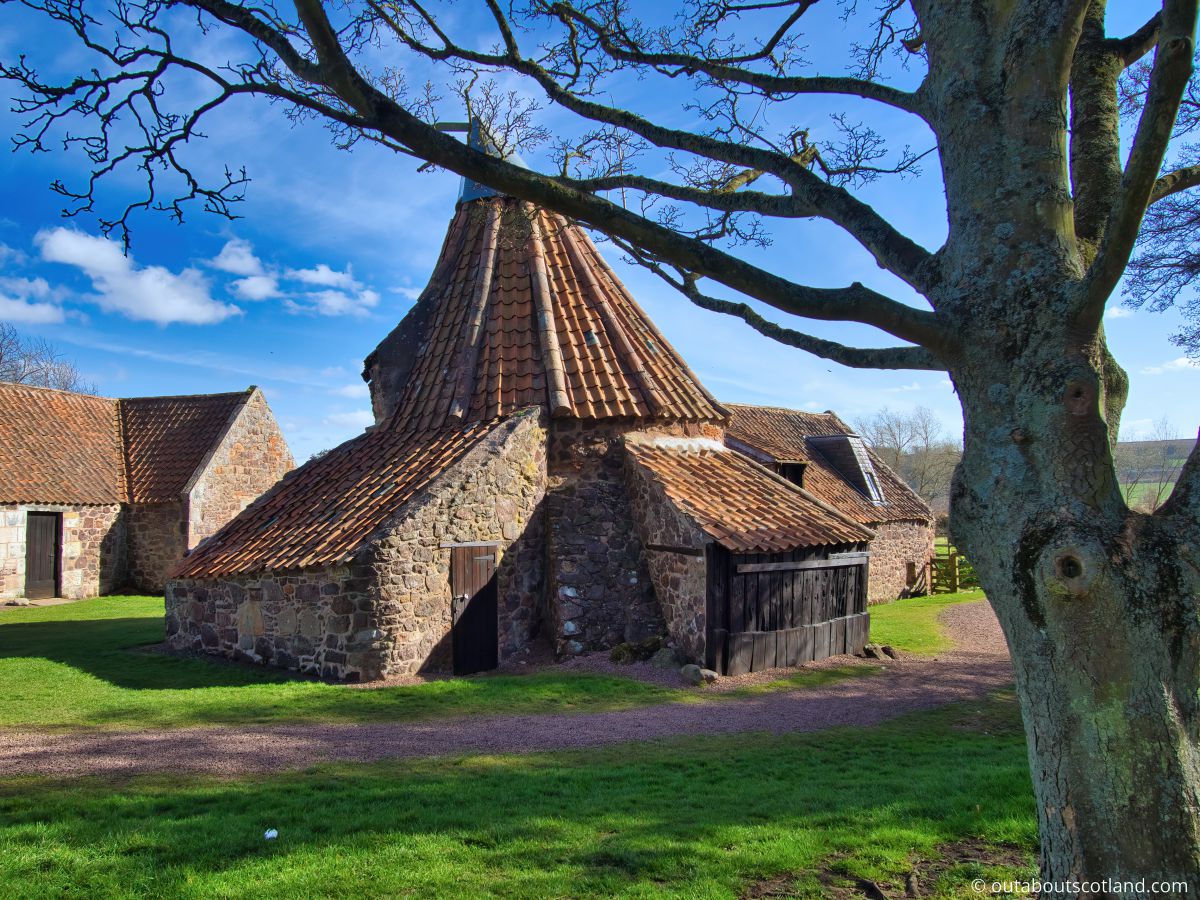
Historical Significance: Preston Mill is East Lothian’s oldest surviving water-powered mill. Dating back to the 18th century, it played a pivotal role in the local economy by grinding grain into flour for local use and export.
Unique Architecture: The mill is recognized for its unconventional architecture. Its conical shape, which is unusual for a mill, is thought to have been designed to withstand the frequent flooding in the area.
Iconic Waterwheel: An impressive undershot waterwheel, a type of waterwheel that depends on the flow of the river underneath it, powers the mill.
Preservation Efforts: In 1950, the mill was donated to the National Trust for Scotland which undertook extensive preservation efforts to maintain the mill’s buildings.
Functional Demonstration: Preston Mill remains operational to this day for demonstration purposes, offering visitors a chance to step back in time and experience the mill’s original milling process.
Outlander Fame: Preston Mill shot to fame when it was used as a filming location for the hit TV series ‘Outlander’.
Phantassie Doocot: A short walk from the mill is the Phantassie Doocot, a 16th-century pigeon house that’s one of the largest of its type in Scotland. It was used to house pigeons which were used as a source of meat, while the droppings were used as fertilizer in the surrounding fields.
National Museum of Flight

Established in 1975: The National Museum of Flight was established in 1975 on a former RAF airfield in East Fortune. The airfield itself is important as it played an instrumental role in both World Wars.
Concorde G-BOAA: One of the museum’s most iconic exhibits is the Concorde G-BOAA. This was the first Concorde to fly commercially and it’s now permanently housed at the museum.
The Parachute Store: This building, now a listed historical monument, was originally used to pack and repair parachutes during WWII. It’s one of the few remaining original buildings of East Fortune Airfield.
Fortune Festival of Flight: Every summer, the museum hosts the Fortune Festival of Flight, a popular airshow that features spectacular aerial displays, historical reenactments, and hands-on activities for families.
World War I and II Exhibits: The museum houses an impressive collection of aircraft from both World Wars. These include a Spitfire, one of the most successful fighter planes of WWII, and a Sopwith Camel, a British First World War single-seat biplane fighter.
Recognition and Awards: The National Museum of Flight has won the Association of Scottish Visitor Attractions ‘Best Visitor Experience’ award.
North Berwick
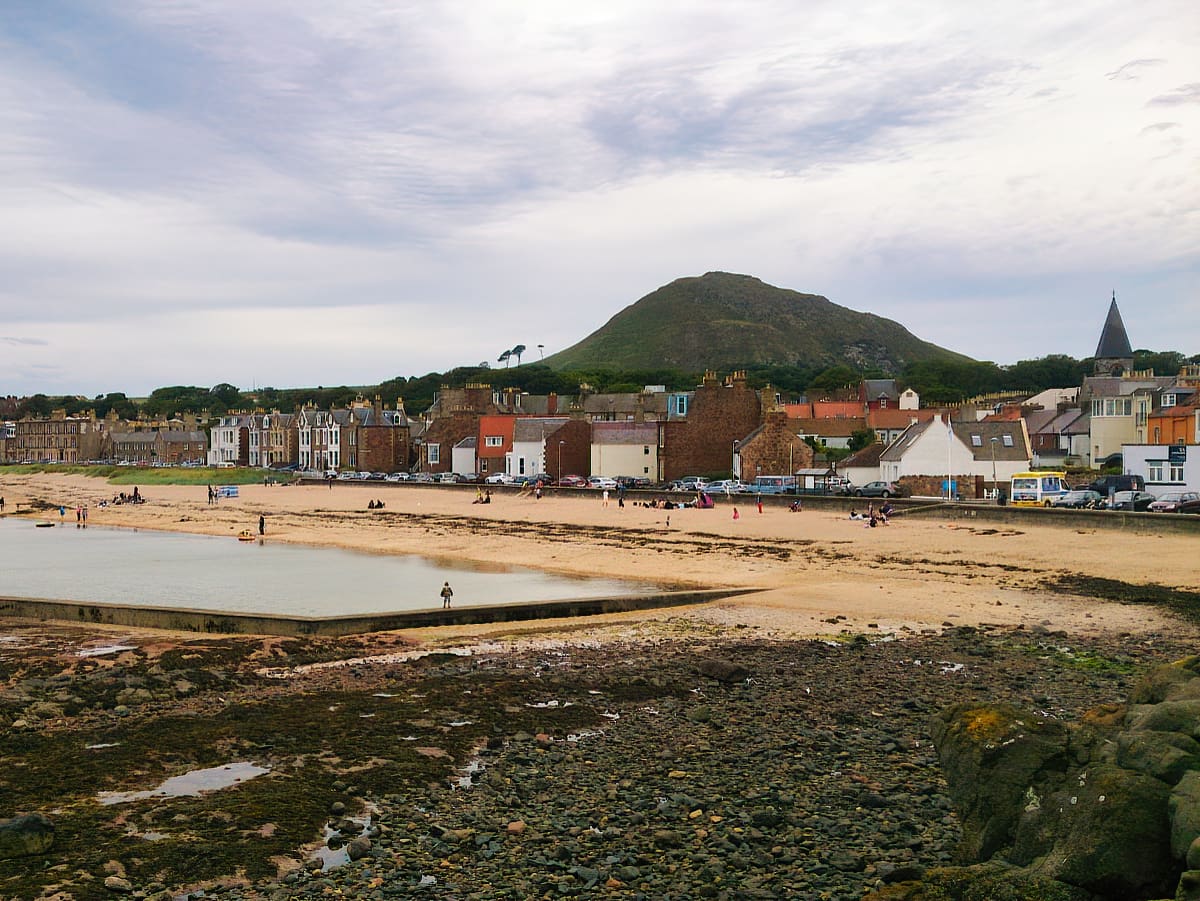
Historic Harbor Town: North Berwick is a picturesque seaside town in East Lothian. Its history dates back to the 12th century and it played a significant role as a harbour town during the Middle Ages.
Famed for Golf: North Berwick is renowned for its golf courses. The North Berwick West Links of the North Berwick Golf Club was established in 1832, making it one of the oldest courses in the world.
Witch Trials: In the 16th and 17th centuries, North Berwick was infamous for witch trials. King James VI of Scotland even attended some of these trials which were among the first to use ‘witch pricking’ as a method of identifying witches.
North Berwick Law: This ancient volcano and hill located in the town provides panoramic views of the surrounding countryside and coast. Its summit features a whale’s jawbone, a unique landmark visible for miles around.
Annual Festivities: North Berwick hosts an annual ‘Fringe By The Sea’ festival, a smaller counterpart to the world-famous Edinburgh Fringe Festival.
North Berwick Law
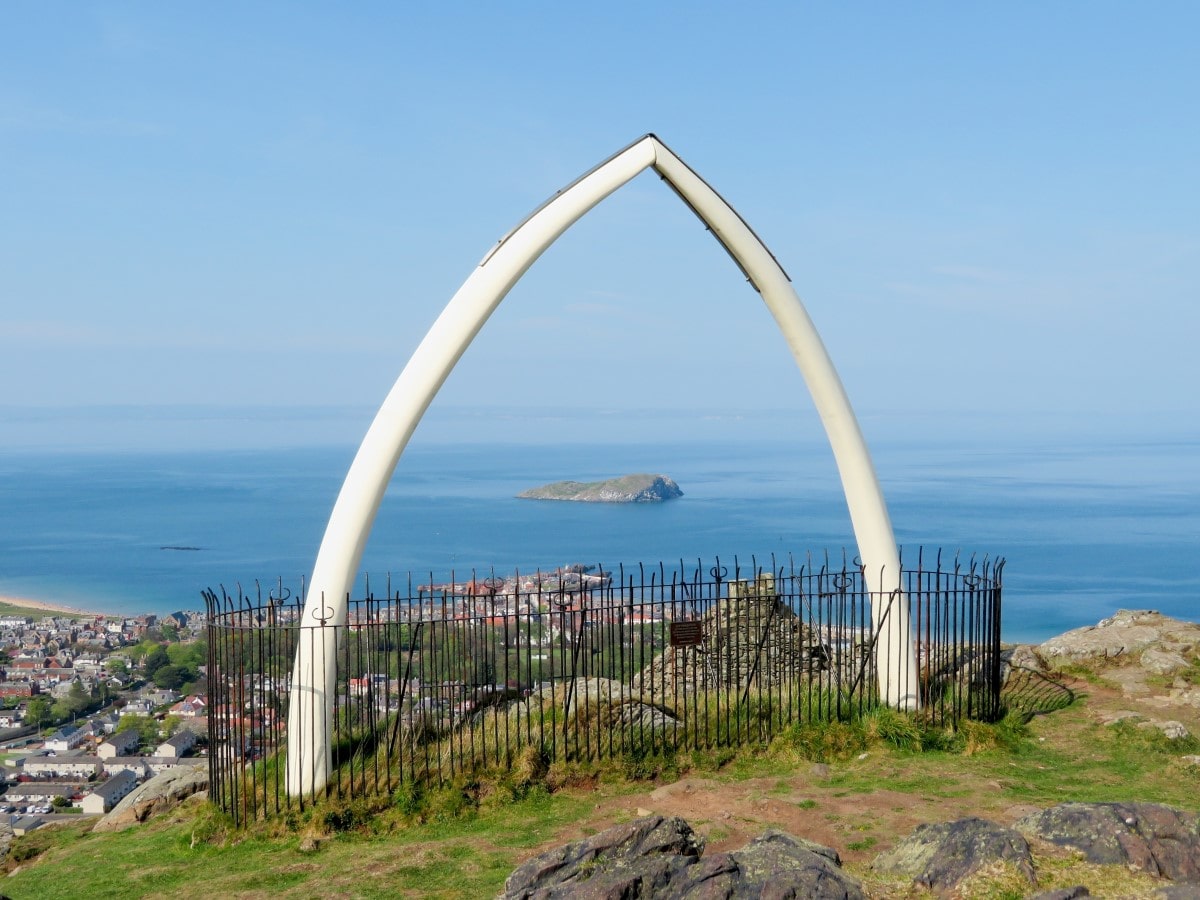
Volcanic Origin: North Berwick Law is an ancient volcanic plug, formed around 335 million years ago. This geological feature was created when magma hardened within the vent of an active volcano, which subsequently eroded away, leaving only the hard plug.
Whale Jawbone Arch: A notable feature of North Berwick Law is a whale jawbone arch which was first erected in 1709. The original bones have been replaced several times due to weathering, with the last real bone removed in 2005. The arch is now made of fibreglass.
World War II Lookout Post: A key part of North Berwick Law’s history is its use during World War II. The summit was used as a lookout post and the remains of the buildings used by the coastguards and volunteers are still visible today.
Napoleonic Signal Station: During the Napoleonic Wars, a signal station was built on the Law. The station was part of a chain of signals stretching from the Admiralty in Edinburgh to ships in the Firth of Forth.
The Berwick Law Race: An annual hill race, known as the ‘Law Race’, takes place every August. The gruelling 3-mile course starts and finishes in the town, with the route passing over the top of the Law.
Iron Age Hill Fort: The Law was once the site of an Iron Age hill fort. Although only faint traces of it remain, the fort is believed to have been a significant settlement in prehistoric times.
Seton Collegiate
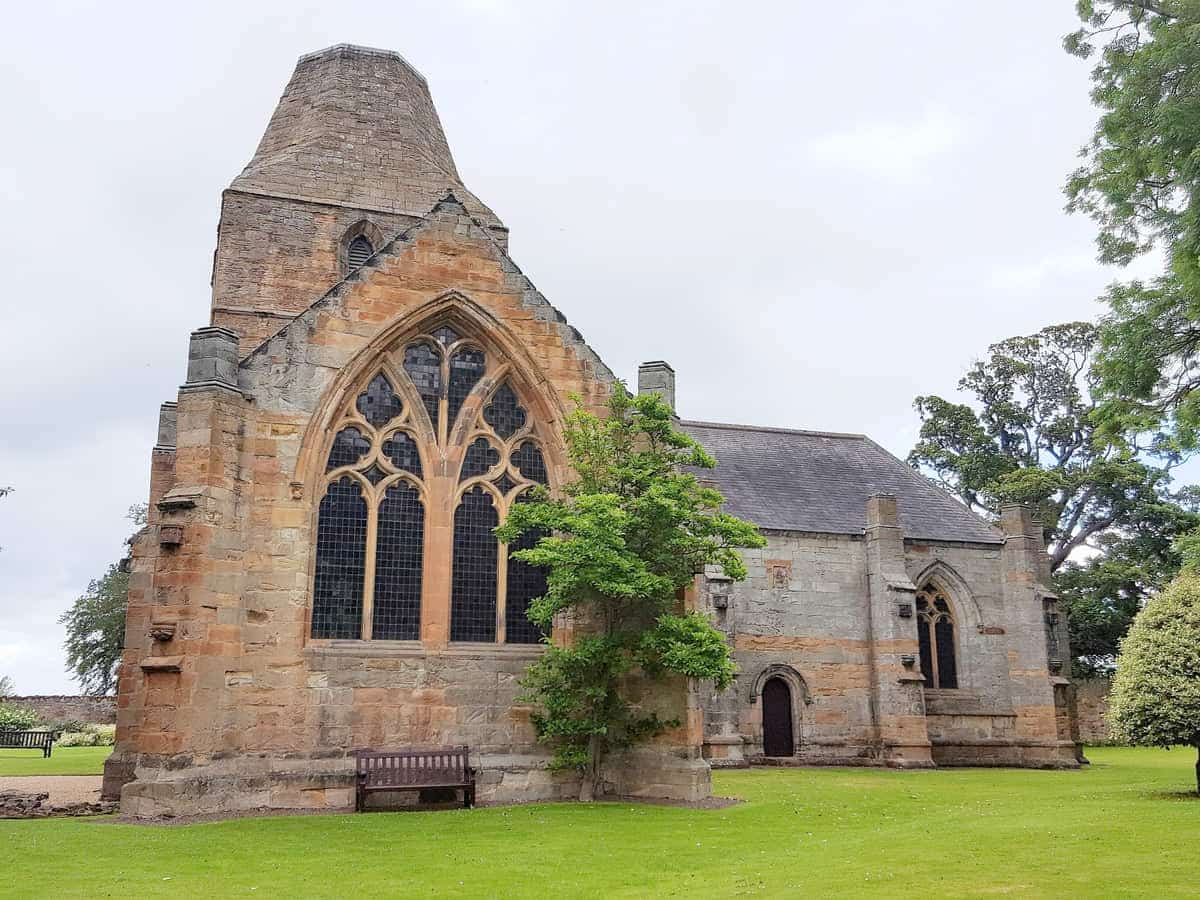
Seton Family Legacy: Sir Alexander Seton, the first Lord Seton, founded the church in 1470. The Seton family, known for their close ties to the Scottish monarchy, played a prominent role in the country’s history.
Collegiate Foundation: Seton Collegiate Church was established as a collegiate church, a unique type of institution in medieval Scotland. It housed a college of priests who lived communally and were responsible for praying for the souls of the Seton family and the wider community.
Tumultuous History: The church has witnessed its fair share of history including the turbulent Scottish Reformation of the 16th century. During this period, religious reforms brought about significant changes to the church’s practices.
Well-Preserved Choir Stalls: The choir stalls in Seton Collegiate Church are remarkably well-preserved and show intricate woodcarvings. The priests would have used these stalls for daily worship.
Diverse Architectural Styles: The church exhibits a blend of architectural styles including Gothic, Renaissance, and even some early Baroque elements.
Tantallon Castle

Historical Significance: William Douglas, the 1st Earl of Douglas, constructed Tantallon Castle in the 14th century, around 1350. The castle served as the stronghold for the Red Douglas dynasty for over 300 years.
Unique Design: Unlike many other castles of its time, Tantallon Castle is a curtain wall castle. It features a single defensive wall blocking off the headland, with the other three sides naturally protected by sea cliffs.
Survivor of Sieges: Tantallon Castle is known for withstanding three major sieges during its lifetime. The most notable was in 1651 by Oliver Cromwell’s forces during the Third English Civil War which eventually led to its ruin.
Impressive Architecture: The Douglas Tower, the main residential tower of the castle, was a marvel of medieval architecture. It was originally four stories high and featured a great hall, bed chambers, and a private chapel.
Ghostly Legends: Like many historic sites, Tantallon Castle has more than a few ghost stories. The most famous one is of a ghostly figure – possibly the Earl of Douglas – who can be seen in a photograph taken in 2008.
Historic Scotland Site: Since the early 20th century, Tantallon Castle has been in the care of Historic Environment Scotland and is recognized as a Scheduled Ancient Monument.
Yester Castle
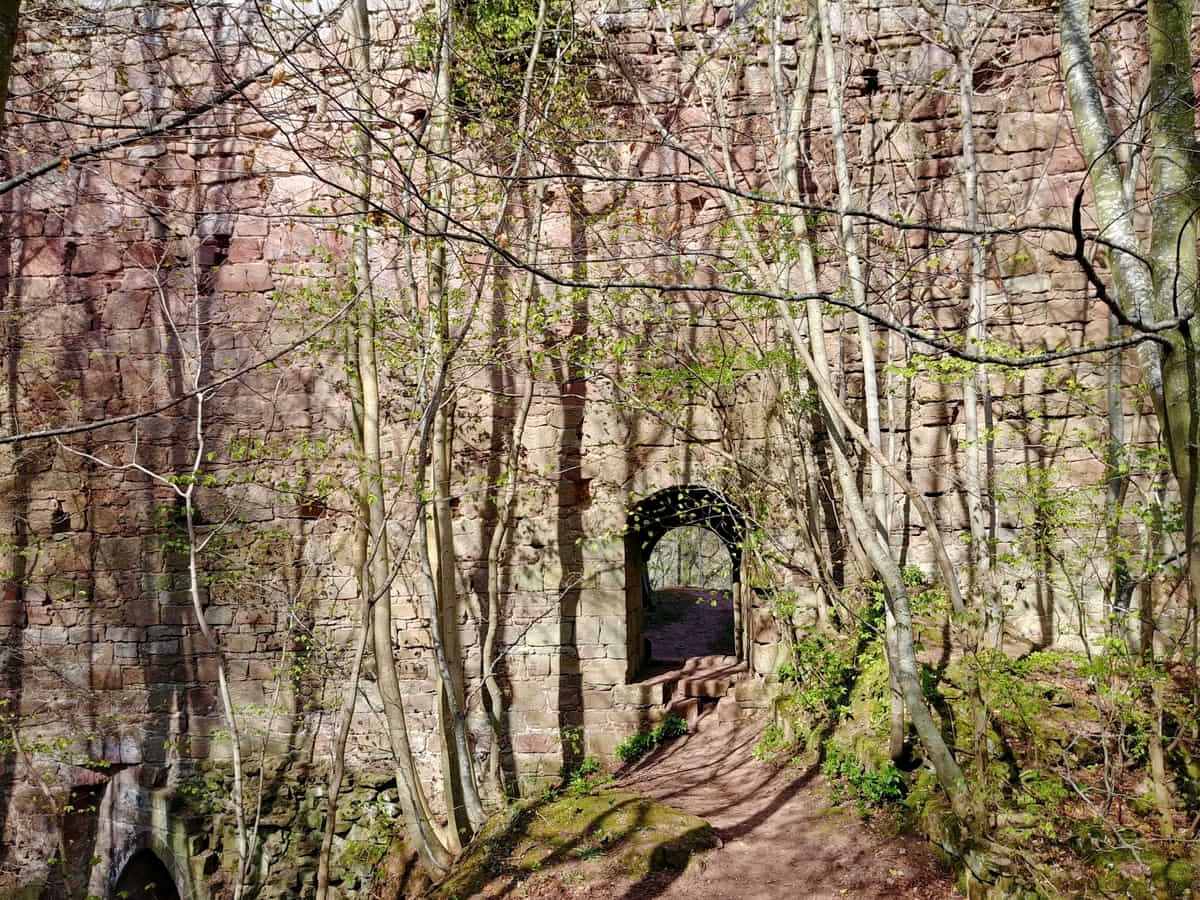
Historic Origin: Yester Castle has a history dating back to the 13th century. Sir Hugo de Giffard, known as the ‘Wizard of Yester’, built the original stone keep sometime before 1267. The Giffards were a powerful family in the area and Sir Hugo was reputed to be a necromancer (a type of occultist).
The Goblin Ha: The most fascinating feature of Yester Castle is undoubtedly the Goblin Ha, a subterranean chamber located beneath the castle. The name ‘Goblin Ha’ is derived from the ancient Scottish word ‘Ha’, meaning hall.
Legend of the Goblins: Stories say that Sir Hugo de Giffard made a pact with the devil and conjured an army of goblins to build the Goblin Ha. Goblins are supposedly grotesque creatures that are mischievous rather than evil.
Unique Architectural Feature: The Goblin Ha is architecturally significant for its barrel-vaulted ceiling which is a unique feature among 13th-century buildings. This design was advanced for its time and indicates an unusually high level of craftsmanship.
Role in Warfare: The castle had a strategic function during the Wars of Scottish Independence in the 14th century. During the Battle of Neville’s Cross in 1346, the Scottish used it as a fortified base.
Frequently Asked Questions
What is the largest town in East Lothian?
The largest town in East Lothian is Musselburgh with a population of over 20,000 residents, making it the biggest settlement in the county. Musselburgh is located on the coast of the Firth of Forth at the mouth of the River Esk.
What is East Lothian famous for?
East Lothian is renowned for several reasons including:
Exceptional Golf Courses: East Lothian is often referred to as ‘Scotland’s Golf Coast’ due to its abundance of high-quality golf courses.
Rich History: The region boasts a fascinating history with several historical landmarks like Tantallon Castle, Dirleton Castle, and the Battle of Prestonpans battlefield.
Natural Beauty: East Lothian is known for its stunning landscapes, beautiful coastlines, and wildlife reserves like the John Muir Country Park.
Agriculture: The county is known as the ‘Garden of Scotland’ due to its fertile lands. It’s particularly known for potato farming and is a major player in barley production which supports the whisky industry.
Birthplace of John Muir: The town of Dunbar is the birthplace of John Muir, the famous naturalist and founder of America’s national parks.
Where does East Lothian cover?
East Lothian lies in the southeastern part of Scotland where it’s bordered by Edinburgh to the west, the Scottish Borders to the south, and the North Sea to the north and east. The county encompasses several towns and villages including the administrative centre of Haddington and the towns of North Berwick, Musselburgh, Dunbar, and Tranent.
Is East Lothian affluent?
East Lothian is generally considered to be an affluent area in Scotland. It has a relatively high average income level and the area has seen significant investment in recent years, particularly in the tourism and leisure sectors.

